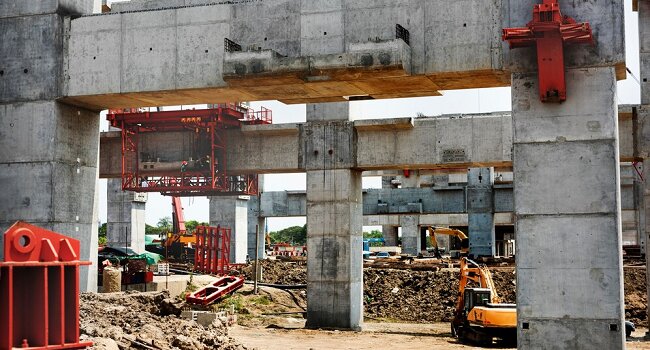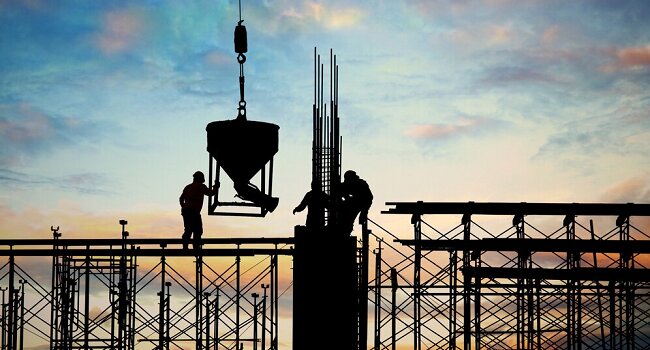The industrial construction sector is fast-paced and dynamic. The processes and best practices of today may be a thing of the past this time next year as firms look for new ways to improve safety, enhance building performance, and, ultimately, boost the profitability of their structures.
With this in mind, innovative tools, materials, and technology continue to change the landscape and provide new ways of doing jobs better. Keep reading as we explore some of the most advanced solutions in industrial construction.
Augmented Reality (AR) and Virtual Reality (VR)

AR and VR tools are some of the most exciting technologies used by modern architects. They can give construction professionals the chance to see their designs in action and simulate real-life events before breaking ground on the project. This offers vast potential in the realm of material sourcing and construction technique, as it gives professionals the chance to visualize exactly what they need before they actually start building.
However, these technologies offer the greatest benefit in terms of safety. By introducing virtual designs to fire, extreme weather, terrorist threats, and other types of forces, designers can get an accurate look at how their facilities will perform under stress. This allows them to make the necessary adjustments, employ adequate safeguards, and draw-up effective contingencies to better protect the integrity of the structure and its occupants before it goes live.
Passive Building Design

The demand for sustainability is acutely felt in the industrial construction sector. Government regulations are tightening. Consumers are choosing to support only those enterprises that are aggressively seeking solutions for sustainable commerce.
This has given rise to increased interest in passive building design. Passive construction involves using features inherent to the site for lighting, heating, cooling, and ventilation. Passive buildings are strategically oriented to use sunlight for natural daylighting.
They align the shorter axis of the structure with prevailing wind patterns, pairing this natural ventilation with industrial fans to lower A/C requirements. Passive facilities also consider the surrounding topography, strategically using any hills, trees, and bodies of water for shading and cooling purposes.
Modular Construction

Modular construction offers a diverse array of benefits to industrial projects. Among them include cost effectiveness, expedited timelines, and improved energy efficiency.
By prefabricating sections of a building away from the construction site in a controlled factory setting, it reduces the risk of weather delays, labor shortages, and other unforeseen circumstances that historically stall construction. It also limits construction error and increases precision, reducing the threat of costly rework scenarios and material waste.
Hydrovac Excavation
Many industrial construction projects are exploring ways to revitalize existing structures instead of starting from scratch on new facilities. This helps reduce waste and limit further expansion into farmland and forests.
Historically, the greatest challenge when rehabilitating existing buildings was the foundation and other subterranean components of the structure. It is unsafe to build on damaged foundations or utilize pipes and electrical wiring that is not up to modern codes. In the past, the only option for accessing these key building components for assessment was to break out the excavator and start digging.
Unfortunately, this old-fashioned utility daylighting often did more harm than good. There was too much guesswork involved, with excavators often striking and doing irreparable damage to these delicate subterranean systems.
The good news is that modern hydrovac excavation has added much-needed efficiency to this process. What is hydrovac excavation? It is a specialized digging process that uses high-pressure water jets to knock away soil for utility and foundation daylighting.
The water/soil slurry is then suctioned into a tanker truck and removed from the job site, creating a clean, efficient work environment. With narrow trenches and no backfill, it is the perfect solution for accessing even the most hard-to-reach below-grade areas of a building, making it the preferred choice in modern building renovation.
Next-Level Noise Controls
Modern commercial facilities are increasingly employing the open interior concept. This offers many benefits in terms of energy efficiency and streamlined customization. However, the one drawback is that with fewer walls, there is increased risk of noise pollution and other unwanted sound transmission.
Fortunately, there are many innovative building materials that can aid in soundproofing for a more tranquil work environment. Acoustic wall panels and ceiling clouds add soundproofing mass to the building envelope, absorbing sound waves and keeping noise local.
Specialized acoustic louvers promote ventilation while mitigating noise in rooftop amenity spaces and generator rooms. HVAC dampers and noise attenuators can keep busy systems from becoming a distraction during the height of their usage.
The Future Is Here: Advanced Materials and Techniques for Commercial Construction
From AR/VR to next-level noise controls, new material technology and advanced building techniques continue to shape the industrial construction landscape. For more of the latest trends shaping the commercial construction sector, explore the resources at World Construction Today for the leading insights in the industry.





























